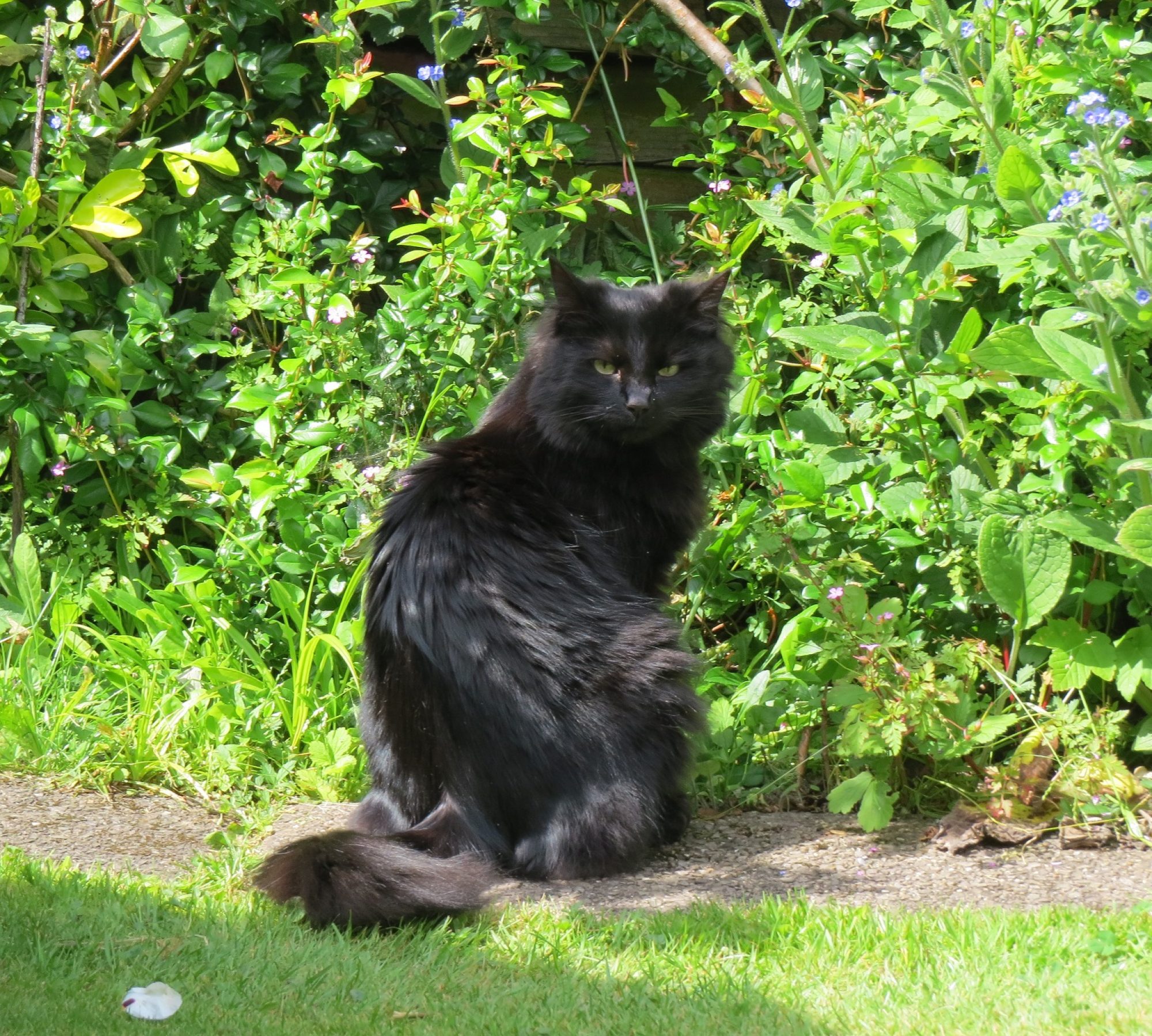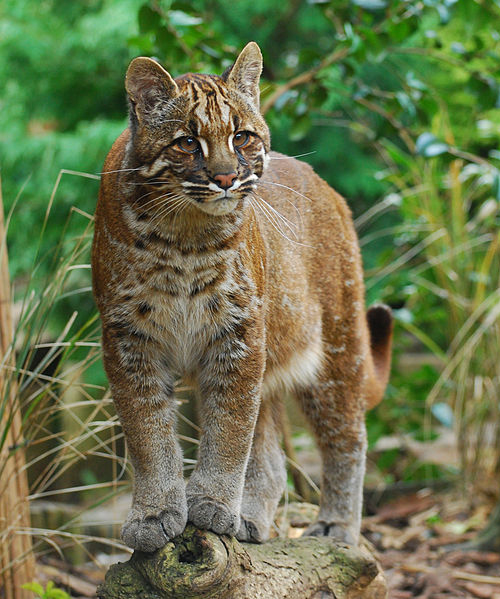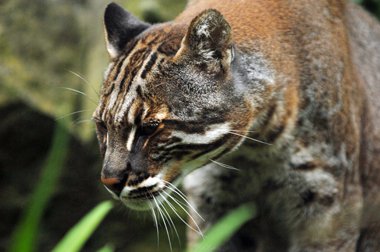Golden Cats are sturdy strong felines with long legs and large paws. These creatures are over twice the size of our own domestic cats (at 1 metre long and 45 cms tall). A fully grown adult can weigh 15 Kg or more. Fur can be russet red to golden-brown but may range to black and grey also (leading to the common nickname “Fire Cat” no doubt. Their coat is of moderate length but very thick and generally unmarked, although cats in the more northern regions of Asia (and Africa) are more likely to have spots and stripes which closely resemble the markings of the Leopard. Ironically, this beautiful coat and unique colouring is one of the traits of this animal that places them in the greatest danger.
In Burma and Thailand a golden cat has for centuries been known as a “Fire Cat”. Legend advises that carrying one hair (taken from this animal) will give the bearer protection from tigers! It’s also said that burning a pelt from this cat will drive tigers away from the surrounding area. However, hunting of this cat is banned in a number of countries (and rightly so). With its restricted natural habitat depleting over time, along with the bush meat trade, the African golden cats might soon be in danger.
In parts of China they are known as the “Rock Cat”. They range (in Asia) from Nepal and northeast India through southeast Asia, China, Thailand, Malaysia and Sumatra. Unlike the African cat however, the Asian species is considered to be more abundant throughout their range.
Apart from the (often) red coat the most distinguishing feature of this cat are the white lines bordered with black running across the cheeks, and from the inner corners of the eyes up to the crown. As with many cats, the underside and inner legs are white. The backs of the short, rounded ears are black, with a whitish central area, and the eyes can be usually greyish green or amber.
The African golden cats (Profelis aurata) are found in the humid rain-forest parts of Western and Central Africa and also in the dryer secondary forests of these regions where they can be quite active in the lower part of the tree canopies. They are closely related to their Asian cousins although the two are separated by more than 6,400 kilometers and over a million years of evolution! It is believed that the split in Genes occurred when the forests covering the area from Senegal to China gradually turned to vast deserts. It is believed that over the years the deserts isolated the two Golden Cat populations.
Both the Golden Cat Species resemble the Caracal Cat and also the Serval Cat. They are (similarly) nocturnal forest dwellers, preferring deciduous and tropical rain forest, and occasionally more open areas with rocky tracts. In this terrain their long legs make them highly agile and excellent at climbing trees. Nevertheless, they spend most of their time living on the ground walking on their large paws and curling their striped tails up at the tip.
Opportunistic hunters, Golden Cats prey on a wide variety of small mammals such as: rodents and ungulates, birds, reptiles, young hares, muntjacs, small deer and water buffalo calves. They have also been known to prey on poultry, sheep and goats (which is why they can be disliked and hunted. African golden cats are also known to feed on mid-sized animals like monkeys and hyrax.
In reproduction, the cat embryo grow for 80 days, at which point the mother gives birth to up to three kittens, weighing approximately 250 grams each. Their eyes open at around nine days, and they are weaned at six months. Kittens have longer, thicker coats than the adults, but show no pattern. They also have a slightly darker coat than the adult. By three weeks, the kittens can walk and prance around with quite an ease. They start eating solid foods when they are around six weeks of age. Around 18-23 months, the African golden cats reach their sexual maturity. The lifespan of these wild cats may vary. However, in captivity, the golden cats are known to live for around fifteen years.
The Asiatic golden cat is widely reported as uncommon and threatened by deforestation. Major threats also include hunting for their pelt and bones. Their meat is considered a delicacy and the bones are then sometimes ground into a powder to be given to children for fevers. Although they are reported to be decreasing in India and Indonesia, no factual information is known of their status in the wild. Unfortunately, hunting is still allowed in Laos, Bhutan and Brunei. CITES has placed them on Appendix I and then IUCN Red List Status is ‘Near Threatened’.



